You are using an outdated browser. Please upgrade your browser to improve your experience and security.

Saturday, 20 April 2024

Agenda - The Sunday magazine
- Cover Story
Sunday Edition
- Spirituality
Space journeys in ancient India
Ancient sages freely moved from Earth to far-off planets like Brahma loka, which had different time speeds than Earth, writes Dr Asha Goswami
This study relates to the well-known theory of Astrophysics regarding space travel, ‘that among twins, one brother who stays on earth grows older and the other who is on space travel remains of the same age’ [vide Hawking, A Brief History of Time]. This is not a new notion, in fact the same phenomena of Astrophysics were even known to our ancient sages, the Puranakaras long back in the Puranic age, about 5,000 years ago. They were not only aware of space journeys, but also of the existence of other planets besides the earth which they knew as Pitriloka, Devaloka, Indraloka, Brahmaloka, so on and so forth. Not only this but, they also freely moved from earth to other far-off planets like Brahma loka which had different time speeds than Earth. They were also equipped with knowledge such as that gravity can bend time in space.
As, clue to their awareness of such a theory of the Astrophysics be derived from a chronicle as described in the Bhagavatapurana IX 3.29-36 and the Vishnupurana IV 1.20-39, which refers to a similar state of affairs during the Treta Yuga. The chronicle recounts that in the Treta Yuga, the oldest son of Revata, who was named as Kakudmi undertook space travel to reach another Planet Brahmaloka to take advice from Brahma, the sole ruler and king of that Planet with regard to the suitable match for his daughter Revati who was also accompanying him. After arriving there they had to wait for a ‘moment’ as King Brahma was busy with other guests and couldn’t attend to them immediately. Once the guests were gone, Brahma apprised Kakudmi with the above cited phenomena of Astrophysics ‘that a moment spent in his loka was equal to twenty-seven Tetra-Yugas or approximately about 216 years on earth; and a moment of wait thus spent by them at the Brahmalokawas also equal to twenty-seven Tetra Yugas on earth. Hence, from the time the king and the daughter had left the Earth, round about 216 years had passed in between. With the result at that time those suitable grooms for his daughter which he then had in his mind had also died; and the only option of suitable match for his daughter at that time could be the best of Yadus, who was Krishna’s brother Baladeva. Hence, he should go to earth and marry his daughter to Baldeva only. King Kakudmi then returned to Earth and discovered to his surprise that his whole clan had lost. In such a situation he got his daughter married to Baladeva who was of different clan than him and also much shorter in stature than his daughter Revati, whom they were also able to make of the same short stature with some medical device available to them those days.
This Puranic chronicle furnishes significant hints as regards the knowledge in the field of Astrophysics which was available to the ancient Indians those days; a) In space, there exist some Planets with different solar system and time speed worth living for the human beings like the Brahma loka which is governed by different solar system and is presided over by Brahma, its sole sovereign, and is 26 light years away from earth. b) A moment spent on such Planet like the Brahmaloka is equal to about 216 years on earth. c) Time passes with different speeds on the different Planets. d) life gets extended with space Travelling. Thus, on the basis of this the above cited revelations of the Puranic chronicle, there is no exaggeration ascertaining that our ancient sages were well conversant with these phenomena’s of Astrophysics.
Since, the hints to ancient Indians’ knowledge of Astrophysics and related issues are also derived from the Upanishadic statements with regard to the five stages of vital spirit known Prana which are latent in man without which he cannot survive. They are known as Prana,Apana, Samana, Vyana and Udana. While discussing about the five-fold functions of these five vital forces or ‘panchapraanas’, the Prashnopanishad specifically mentions ‘that the gravitation or gurutvaakarshana of the earth serves as in-support of man’s apana, the downward breathing’. Which implies that the Vital Air known as Apana when made active by the connection with gravitation of Earth, directs the ageing process of a being. On the contrary, the same vital spirit when loses contact with the gravitation of Earth, stops the deterioration of a person and helps elongation of his life. This makes apparently clear that according to the Upanishadic statement, the fivefold vital force Prana, which is the very life-aayuh of a person within its two parts as Prana and Apana, representing the upward breathing and downward breathing together exhilarate the life of a person by partaking and consuming the food. Since among them, the Prana represents the spirit that intakes the food, and the Apana is capable of forcing down food and also the life of the person. While, the Samana is responsible for prompting the digestive system; the Vyana helps the blood circulation; and the Udana prompts the thinking faculty of the person.
Thus, the Upanishadic sages make it clear that the attractive force of Earth called as ‘gravitation’ along with these five vital air forces or the Pranas latent in all the beings on earth bring about their ageing process and their ultimate deterioration. On the contrary, during space journeys when the human body loses contact with Earth’s gravitation, his vital force stops its function of deterioration of the human body. As a result, the life of that person gets extended, or remains stable. The same fact is sufficiently evidenced from the chronicle of the Puranas showing that the king Kakudmi and his daughter retaining their same age which they had long back 216 years ago. This also proves the notion of astrophysics correct ‘that life could be extended with the device of space travelling’. Finally, it may be maintained in all fairness ‘that the ancient Indians’ knowledge of other Planets in space besides the earth with different time speeds, and of the notion that life gets extended during space journeys which they used to call ‘Vibhu-gamanam’ proves prelude to the modern-day discoveries made by the Astro-physicists; and also that our ancient sages amply gave vent to their scientific trends while presenting their revelations of the ultimate, the eternal element as Praana Brahma whom they felt always present within themselves as the vital force’.
The writer is a noted Indologist and authority on Krishnaite Studies
Trending News

The Latest | Iran fires air defence batteries and diverts flights after explosions

US and UK issue new sanctions on Iran in response to Tehran's weekend attack on Israel

IPL: Down with hip strain, RCB's Maxwell unlikely to play against KKR on Sunday

Adverse weather hits Dubai flights; Air India IndiGo cancel flights

Real Madrid beats Man City 4-3 on penalties to advance to the CL semifinals

'UP: Ram Lalla honoured with 'Surya Tilak' on Ram Navmi'; PM says 'emotional moment'

Dortmund digs deep to beat Atlético 4-2 and reach Champions League semifinals

PBKS Vs MI: Faltering Punjab Kings, Mumbai Indians desperate to resurrect IPL campaign

Aung San Suu Kyi has been moved from a Myanmar prison to house arrest due to heat wave

GT Vs DC: Gujarat Titans, Delhi Capitals search for consistency

Israel's military chief says that Israel will respond to Iran"s weekend missile attack

Chelsea vs Everton: "Goal" Palmer scores four in 6-0 demolition of dismal Everton
State editions, intense heat wave grips kolhan, imd issues alert, ceo takes stock of preparations, meets voters at budha pahad, dharamveer of palwal and balbir kaur of sirsa are oldest voters in hry, chandigarh mc launches crackdown against illegal water tanker service contractors, punjab ceo sibin c holds facebook live interaction with punjab voters, astroturf | reinvent yourself during navaratra, a day awaited for five centuries, navratri | a festival of tradition, innovation, and wellness, spiritual food, healthier shift in navratri cuisine, shubho nobo borsho, e-mail this link to a friend..

- Hinduism, Indian culture, Vedic Science, Yoga, Spirituality, India

Concept of Aeronautics in Ancient India
bY Jayasankar G. – Ph.D. scholar enrolled with Dept. of Sanskrit, Kerala University, Thiruvananthapuram
Ancient India was not only a land of philosophy and religion but also a fertile ground for science and technology. Many great sages authored vast literature on science and technology. Of which sage Bharadvāja’s Vaimānikaśāstra is one of the most renowned and relevant texts, even during this technological peak of twenty first century.
There is mention of the usage of aircraft in the Indian epics, Rāmayāna and Mahābhārata. As mentioned in the Rāmāyana , Ravana used puspakavimāna , which had been captured from Kuvera. However, Rama took charge of this aircraft after killing Ravana and used it to reach Ayodhya along with Lakshmana, Sītā and others. Gavopākhyāna in Mahābhārata , also talks of using aircraft.
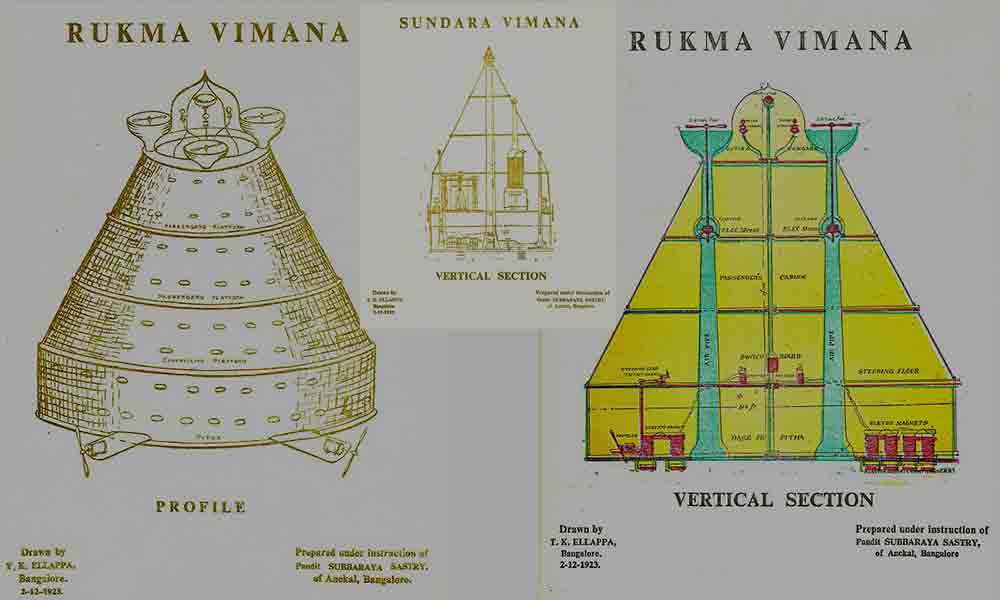
Aeronautics or Vaimānikaśastra is a part of Yantrasarvasva of Bharadvāja. This is also known as Brhadvimanasāstra. Vaimānikaśastra deals with aeronautics, including the design of aircraft, the way they can be used for transportation and other applications, in detail. The knowledge of aeronautics is described in Sanskrit in 100 sections, eight chapters, 500 principles and 3000 shlokas. Great sage Bharadvāja explained the construction of aircraft and way to fly it in air, on land, on water and use the same aircraft like a submarine. He also described the construction of war planes or fighter aircraft.
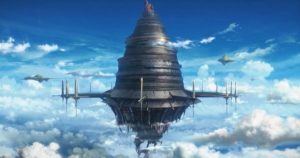
The first principle of Vaimānikaśastra defines an aircraft, ‘vegasamyat vimana aņdajānāma’, which means vimāna is the one which can fly in air like a bird. Subsequent principles explain the requirements for being a vimanādhikari or pilot.
According to Bharadvāja, there are 32 secret techniques to fly an aircraft.
They are mantrikā, tantrikā, krtaka, antarāla, gūda, driśya, adriśya, paroksa, aparoksa, sankoca, vistrita, virūpakarana, rūpāntara, surūpa, jyotirbhava, tamomaya, pralaya, vimukha, tārā, mahāśabda vimocana, langhana, sarpagamana, capala, sarvatomukha, parāshabda grāhaka, rūpākarsana, kriya rahasya grahana, dikpradarśana, ākāśakara racana, jaladāruja, stabdhaka and karsana.
In jātyādhikarana, which classifies aircrafts says, ‘jatitrividyām yugabhedāth vimānānām’.
The aircraft is classified into three types – mantrikā, tantrikā and krtakā, to suit different yugas or eras.
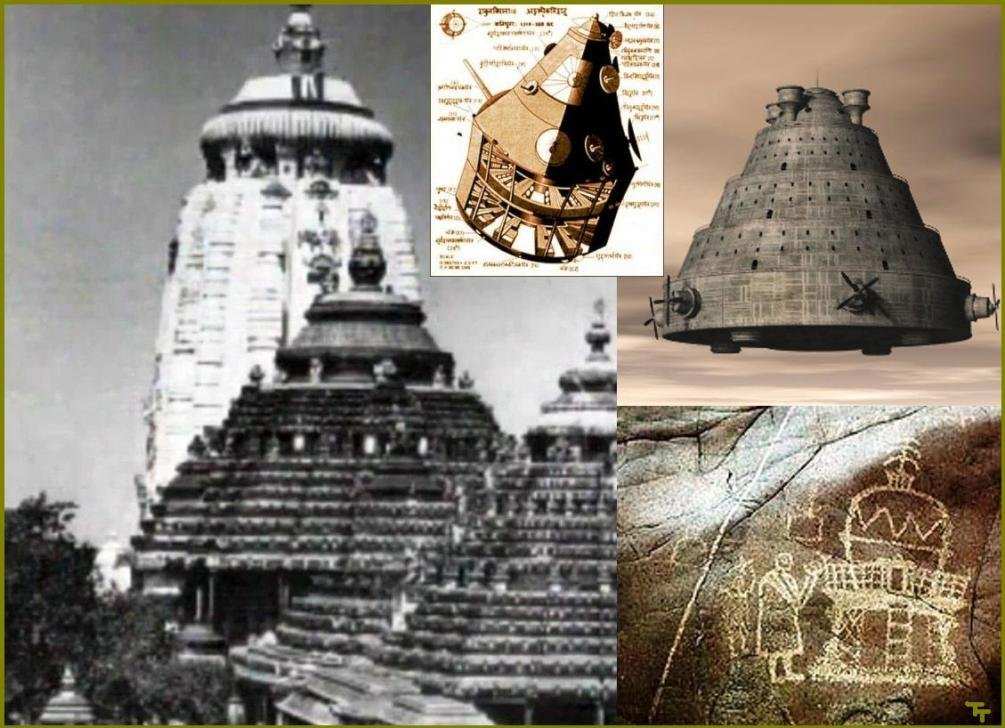
In Krtayuga, it is said, dharma was well established. The people of that time had the divinity to reach any place using their astasiddhis.
The aircrafts used in Tretāyuga are called mantrikāvimāna, flown by the power of hymns (mantras). Twenty-five varieties of aircraft including puspakavimāna belong to this era. The aircraft used in Dvāparayuga were called tantrikavimana, flown by the power of tantras. Fifty six varieties of aircraft including śakuna, sundara and rukmavimāna belong to this era. According to Bharadvāja, a gānyekatrimśat, which means there were thirty one instruments to fly an aircraft, including viśvakriyādarpana, to see the surroundings from the aircraft and śāktyākarsanadarpana, to absorb solar energy. Manufacturing of different types of instruments and putting them together to form an aircraft is also described.
In vastrādhikarana, the chapter describing the dress and other wears required while flying, talks in detail about the wear for both the pilot and the passenger separately.
Āhārādhikarana is yet another section exclusively dealing with the food habits of a pilot. This has a variety of guidelines for pilots to keep their health through strict diet. The Samarāngana Sūtradhāra is an encyclopedic work on classical Indian architecture written by Paramara King Bhoja of Dhārā (1018–1060 AD). In 83 chapters, subjects treated are town planning, house architecture, temple architecture and sculptural arts together with mudrās, the canons of painting, and a chapter on the mechanical contrivances, the yantras. This chapter on yantras deals with gathana, the art of mechanical constructions, delineating upon the definition of yantra, its elements; qualities and manifold varieties of pleasure machines, toy-machines, the machines of warfare as well as the domestic machines, like dvārapālayantra, the soldier machine, etc.
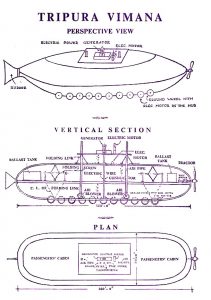
Some of the ideas which have been translated are given below:
“The aircraft which can go by its own force like a bird – on the earth or water or through the air – is called a vimāna. That which can travel in the sky from place to place is called a vimāna by the sage.”
“The body must be strong and durable and built of a light wood (laghu-dāru), shaped like a bird in flight with wings outstretched (mahāvihanga). Within it must be placed the mercury engine, with its heating apparatus made of iron underneath.”

Among many significant contributions of ancient Indian scientists, Vaimānikaśastra is notably a towering work dealing with vimanas and allied topics. As a subject, aviation has its own charm over other disciplines, even in these days. It is the firm view of many scholars that mere knowledge of Sanskrit or science or both plays little role in true understanding of such a work. The authors were intelligent to use coded terms, symbolic expressions, and archaic language to safeguard knowledge against falling into unauthorized hands. For right understanding, true flair in Sanskrit and science along with an expertise to decode and interpret with reference to context are the key.
Source: National Mission for Manuscripts
You may also like
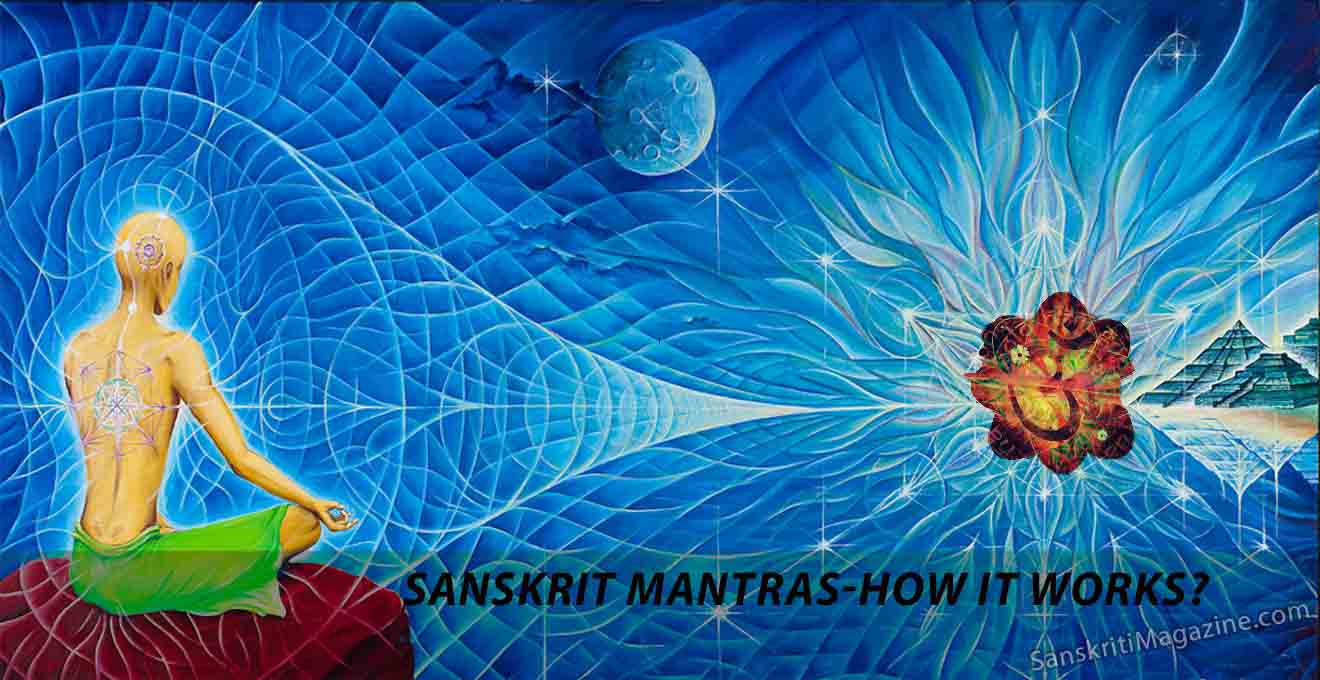
Sanskrit Mantras- How it works? A Scientific Perspective
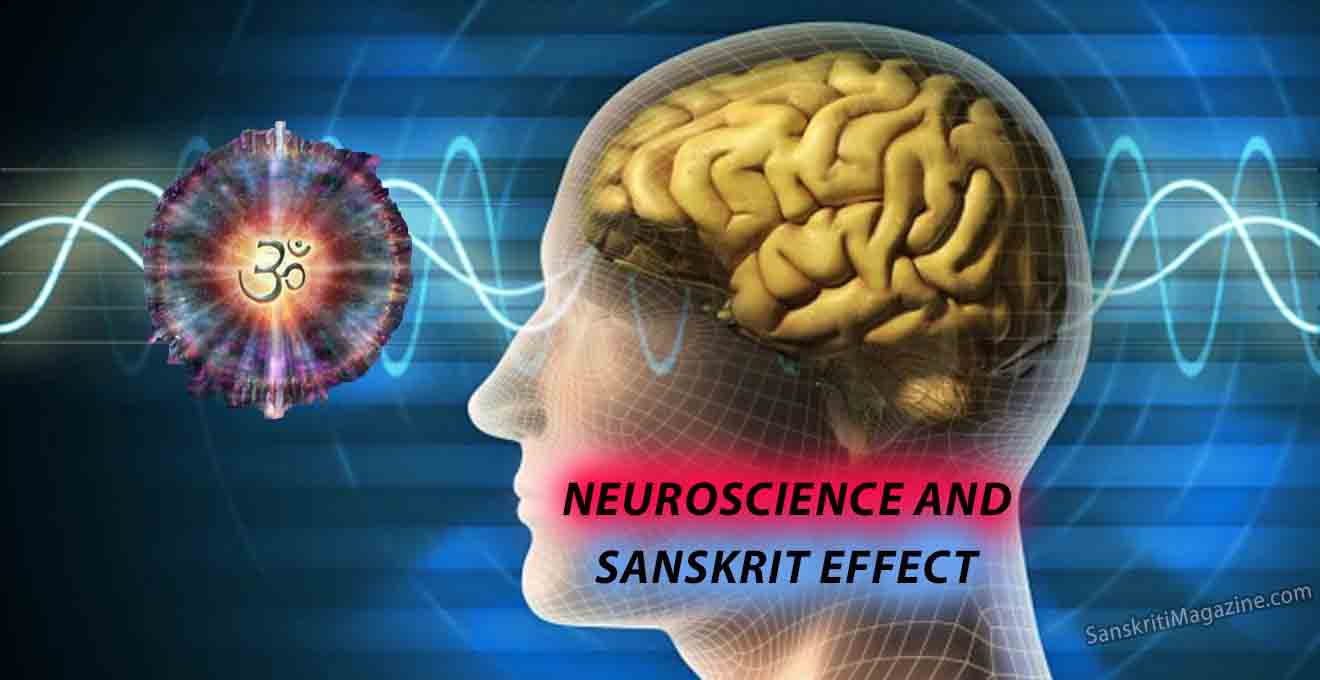
Chanting Sanskrit increases Brain Cognitive areas- “Sanskrit Effect”
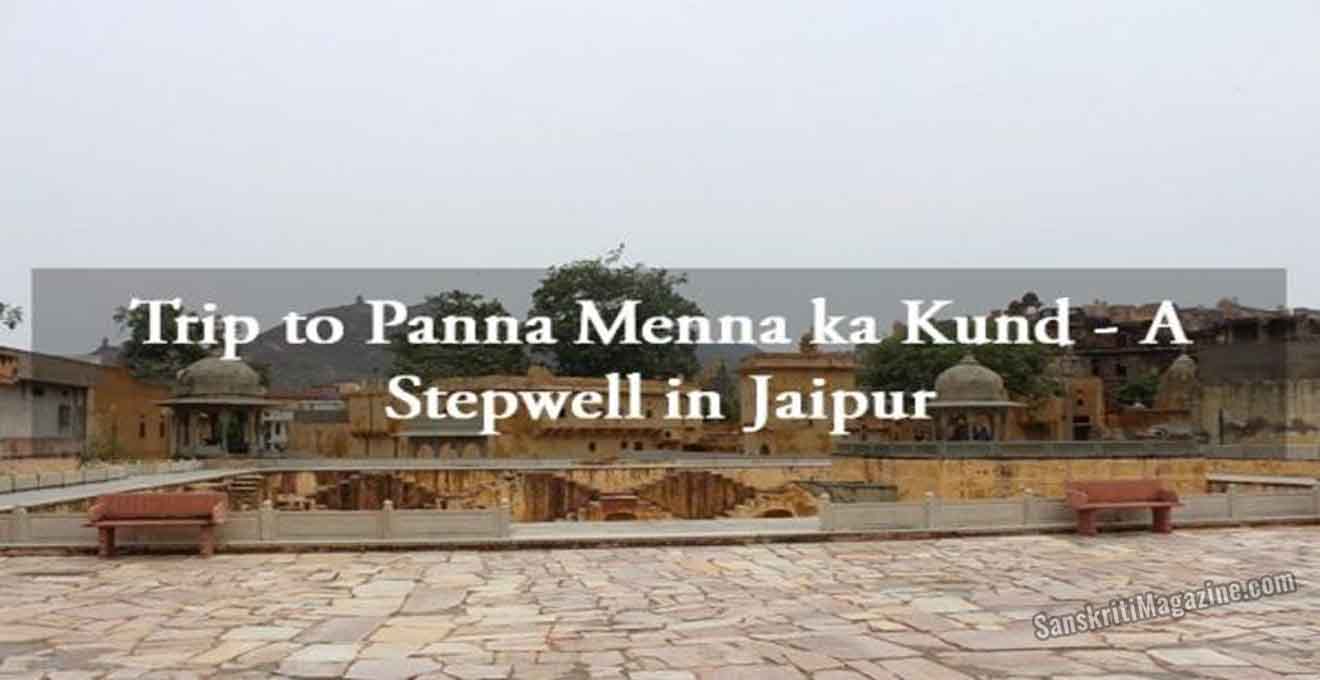
Trip to Panna Meena Ka Kund- Mysterious stepwell in Jaipur
Sanskriti calendar 2024.

Search the website
Like us on facebook.
Get daily updates via Email
Enter your email address:, recent posts.

Navratri Series – Day 9: Goddess Siddhidatri – The Bestower of Supernatural Powers
Celebrate the conclusion of Navratri with Goddess Siddhidatri on Day 9. Learn about her powers to bestow siddhis and her role in achieving spiritual enlightenment. #Navratri2024 #GoddessSiddhidatri #SpiritualJourney


Navratri Series – Day 8: Goddess Mahagauri – The Beacon of Purity and Serenity
Day 8 of Navratri is dedicated to Goddess Mahagauri, known for her purity and tranquility. Discover how she symbolizes cleanliness and moral integrity, offering peace and renewal to all.

Navratri Series – Day 7: Goddess Kalaratri – The Fierce Protector
Explore the might and mystique of Goddess Kalaratri on Day 7 of Navratri. Learn about her role as the destroyer of darkness and her powerful protection against evil.

Navratri Series – Day 6: Goddess Katyayani – The Warrior of Righteousness
“Discover the powerful essence of Goddess Katyayani on Day 6 of Navratri. Learn how she embodies courage and fights for righteousness, symbolizing victory over evil.

Navratri Series – Day 5: Goddess Skandamata – The Mother of Wisdom and Courage
Day 5 of Navratri is dedicated to Goddess Skandamata, embodying maternal love and warrior strength. Discover how she imparts wisdom and courage in our lives.

Sanskriti comes from the Sanskrit root “kr” which means to do or to make prefix “sam” is applied before it to convey a sense of embellishment. It means actions done for the holistic refinement and perfection all the potentialities within a human being.
Important Links
“The term “Rishi” in Sanskrit originates from a root that means “To See.” Rishis, quite literally, “see” truths that are unveiled to them in elevated states of consciousness. .These are recorded in Sacred texts called Upanishads , Vedas etc. The wisdom imparted by ancient Rishis has not only enriched the realm of inner science but has also played a pivotal role in shaping and advancing modern scientific understanding. Let us Explore……
Sanskriti Social
Copyright © 2024. Sanskriti Magazine
Copyright © 2024. All rights reserved.
- Logout Login
- Adventure Holidays
- Weekend Getaways
- Driving Holidays
- Travel News
Top Searches
Scenic Train Journeys
India Hill Stations
Uttarakhand Luxury Resorts
Sri Lanka Visa
India Stargazing Guide
Tracing Hindu mythology - 7 places you need to visit in India
Shikha Gautam Shikha Gautam / Times Travel Editor / TRAVEL NEWS , INDIA / Created : Mar 4, 2019, 14:01 IST
You're Reading
India is home to many wonders and tales that have hooked the world for some centuries now. If tales, folklore, and mythology is what you are interested in, a trip to places that have a connection with Hindu mythology is imperative … Read more
India is home to many wonders and tales that have hooked the world for some centuries now. If tales, folklore, and mythology is what you are interested in, a trip to places that have a connection with Hindu mythology is imperative. You will find this handpicked guide to places mentioned in Hindu mythology all the more interesting if you fancy treading the blurred line between real and mythology. Read less
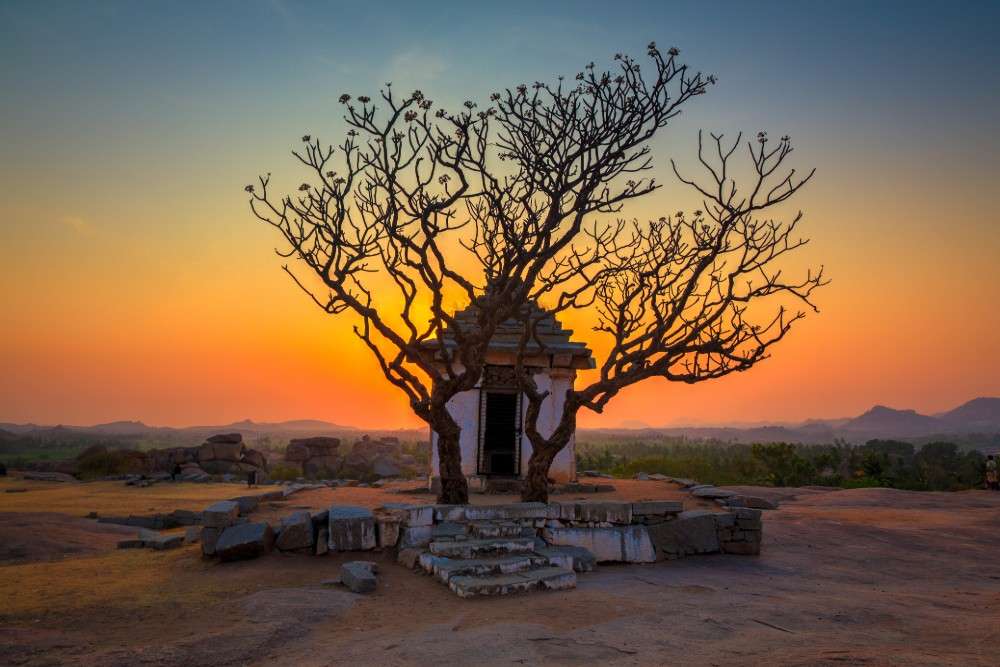
More from Travel News

Comments (0)

Refrain from posting comments that are obscene, defamatory or inflammatory, and do not indulge in personal attacks, name calling or inciting hatred against any community. Help us delete comments that do not follow these guidelines by marking them offensive . Let's work together to keep the conversation civil.
Comments ( ) Sort: Newest UpVoted Oldest Discussed Down Voted closecomments

SIGN IN WITH
Or post without registration.

Visual Stories
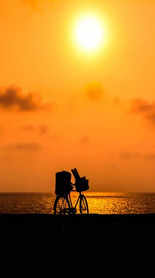
Popular Galleries
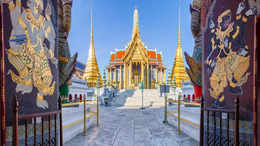
A first-timer's guide to exploring Bangkok: 5 handy tips

Luxury resorts in Uttarakhand that are unique and best for adventure travellers TRAVEL TRENDS , UTTARANCHAL

8 coolest hill stations in India accessible via direct flights! TRAVEL TRENDS , INDIA
Trending stories.
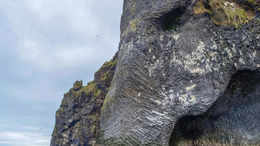
- Visiting Iceland's Elephant Rock, which bears uncanny resemblance to an elephant!

- What’s it like to be on the Matheran Hill Railways?

Discovering Alappuzha: Best things to do in the Venice of the East

Your guide to stargazing in India: Best time and sites to visit
- 1 Tracing Hindu mythology - 7 places you need to visit in India
- 2 Maha Shivratri special: visit these temples to get acquainted with the lesser-known legends of Lord Shiva
- 3 Soon, you can spend a day in Tihar Jail as a tourist and experience jail life
- 4 Virasat-e-Khalsa museum in Punjab enters Limca Book of Records
- 5 The royals of Odisha’s Belgadia Palace open doors for tourists

THE DEFINITIVE GUIDE TO DESTINATIONS, ITINERARIES, THINGS TO DO, RESTAURANTS, NIGHTLIFE and LOTS MORE!
FOLLOW US ON
Places to visit.
- Places to visit in Bangalore
- Places to visit in Mumbai
- Places to visit in Delhi
- Places to visit in Goa
- Hotels in Goa
- Hotels in Jaipur
- Hotels in Shimla
- Hotels in Mumbai
Things To do
- Things to do in Goa
- Things to do in Mumbai
- Things to do in Bangalore
- Things to do in Delhi
Travel Inspiration
- Visa on arrival for Indians
- Honeymoon Places in india
- Hill Stations in India
- Weekend getaways in Mumbai
- Weather in Delhi
- Weather in Chennai
- Weather in Bangalore
- Weather in Mumbai
Best Beaches
- Goa Beaches
- Mumbai Beaches
- Pondicherry Beaches
- Kerala Beaches
- Restaurants in Bangalore
- Restaurants in Chennai
- Restaurants in Pune
- Restaurants in Jaipur
- Hill Station near Delhi
- Winter trip to Ladakh
- Places to visit in Kerala
- Winter Honeymoon Destinations
- UK visa guide for Indians
- Winter Trip to Manali
- Vaishno Devi Yatra
- Special Train Ticket Booking
- HP inter-state Bus
- Honeymoon Destinations India
Latest News
Congratulations.
You have been successfully added to the mailing list of Times of India Travel. To complete the subscription process, kindly open your inbox and click on the confirmation link which has been emailed to you.
Share with friends
Thank You for sharing! Your friend will receive the article link on email mentioned.
- (For more than one recipient, type addresses separated by commas)
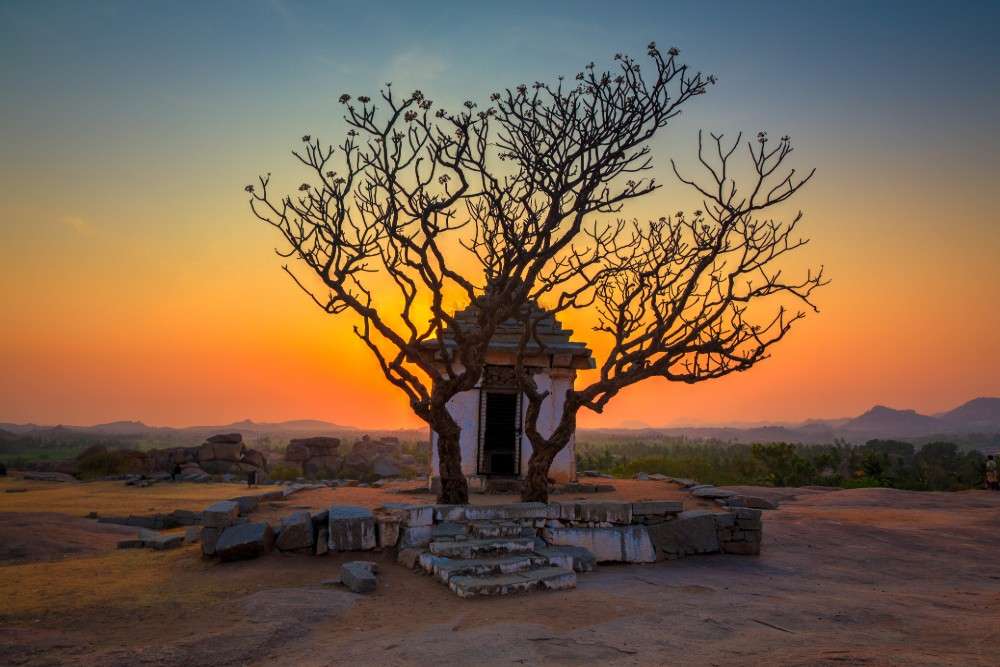
India is home to many wonders and tales that have hooked the world for some centuries now. If tales, folklore, and mythology is what you are interested in, a trip to places that have a connection with...
- Share full article
Advertisement
Supported by
Bangkok Takes Its Place on the Venice Stage
To promote its fourth biennale, the city has mounted an exhibit in a 17th century palazzo on the Grand Canal.

By David Belcher
Bangkok, called the Venice of the East by European missionaries and sailors who fell under the city’s spell centuries ago, will celebrate its fourth biennale this fall , but not before using the 60th Venice Biennale to showcase itself as that other city of canals, culture and art.
“The Spirits of Maritime Crossing,” an exhibition sponsored by the Bangkok Art Biennale Foundation, will run from Saturday to Nov. 24 and will be housed in the newly restored 17th-century Palazzo Smith Mangilli Valmarana on the Grand Canal, which seems fitting.
Much as Venice has long been a showcase, indoors and outdoors, for displaying art during its biennale, the Bangkok Biennale uses spaces including in warehouses, art galleries and its Buddhist and Hindu temples that dot the Chao Phraya River, which snakes through the city like its own canal.
“In 2017 when we started this idea of a biennale, we looked at Venice as a model and even announced the Bangkok Biennale Foundation in Venice that year,” Apinan Poshyananda, chief executive and artistic director of Bangkok Art Biennale and curator of “The Spirits of Maritime Crossing” exhibition, said in a recent phone interview. “This idea of water connects both cities, and we want to make artists aware of our biennale and move outside of Bangkok with our brand.”
The Bangkok Biennale attracted more than 3.5 million visitors in its first three incarnations (2018, 2020 and 2022) and included over 300 artists, with an emphasis on creating visibility for artists from the Global South. It returns Oct. 24 and runs through Feb. 25.
The theme of water — how it connects and separates us — courses through “The Spirits of Maritime Crossing” and its 40 artworks (paintings, mixed media, sculptures and video installations) by 15 artists.
It will have as its centerpiece a 34-minute video installation of the same name , played on an continuous loop throughout the biennale, with the Serbian artist and performer Marina Abramovi c and the Thai dancer Pichet Klunchun depicting a wandering spirit traveling to new lands as a way to connect East and West, Bangkok and Venice.
And the idea of connections and crossings take on various meanings in the exhibition. The movement of people plays a huge role in the embroidered artwork of the Thai artist Jakkai Siributr, 54. A scaled-down version of his large installation “There’s No Place,” (2020) will be housed in one of the rooms. It is a series of embroidered panels depicting the displacement of people.
“I had an opportunity to travel to the Thailand-Myanmar border to a village where about 20 years ago there had been an influx of the Shan ethnic minority from Myanmar,” Siributr said in a video interview from Chiang Mai, Thailand. “I conducted a storytelling workshop, but we told their stories through embroidery rather than orally.”
But he took it a step further by asking the Thai people about how the influx of immigrants affected them.
“I invited the public to participate and work on the same artwork, which was a way to create a dialogue,” Siributr said. “The Shan community depicted their hopes and dreams and their history through colored yarn. For example, there’s one panel of a dream home of a Shan youth, and someone local added a background of trees.”
Migration — and its impact — is also at the center of a video installation by the artist Priyadeetha Dia, whose ancestors migrated from India to Malaysia in the early 20th century. “The Sea is a Blue Memory,” commissioned by the Kochi-Muziris Biennale in Kerala, India, in 2022, takes viewers on a journey that feels immediate in this era of mass migration. It’s also a virtually undocumented bit of history for the artist.
“In my research into rubber plantations, looking mostly at images that depict the laborers’ day to day life, what I found that was missing was the journey to Malay,” said Pria, 31, who lives in Singapore. “There are no images or documentation of the journeys on boats. I felt that was something to build a narrative on.”
What came out of that was a video installation, with sound design by Tini Aliman , also Singaporean, which runs just over 10 minutes and will be on a continual loop for the run of the Venice Biennale.
“The work was produced using C.G.I. [computer-generated imagery], and I thought of the journey through different notions of space and time,” she explained. “You have a sense of floating around in space. We also wanted to think about sound through sonic waves. It captures the sounds of water, ripples and echoes under the sea.”
The other artists represented in “The Spirits of Maritime Crossing” come from Indonesia, Laos, Thailand, the Philippines, Vietnam, Malaysia, Singapore and Myanmar. For Poshyananda, it’s the perfect fit for the 60th Venice Biennale and its theme of “Stranieri Ovunque,” or “Foreigners Everywhere.”
“When the Europeans came to Siam, they were fascinated by the houses on stilts on the canals and the water,” he said. “And now we’re showing Southeast Asian artists in a neoclassical palazzo with murals and décor that depict images from as far away as Africa and Asia, and even Greek mythology. We’re among many spirits on this grand body of water.”
Inside the Venice Biennale
The 2024 venice biennale features work by more than 330 participating artists from some 90 countries scattered throughout the city..
Photos: Our photographer is on the ground covering the spectacle that makes the Biennale one of the premier events in the art world’s global calendar.
Critiquing and Representing the U.S.: Jeffrey Gibson’s history-making turn at the Biennale brings the gay and Native American artist center stage with works of struggle and freedom.
Protests Go On: Israel’s exhibition was already closed after its artist refused to display her work until there was a cease-fire and hostage deal in Gaza. But that didn’t calm the discontent .
Can Adriano Pedrosa Save the Biennale?: Balancing diplomacy and geopolitics is hardly new for the first Biennale curator from Latin America. He isn’t scared to make a strong statement on contemporary art.
A Match Made in Venice: An American institution is sponsoring an exhibition by a Chinese artist in collaboration with a Japanese architect at a centuries-old Venetian building. Here’s how Tadao Ando and Zeng Fanzhi came together .
Criticism Meets Optimism: The group show “Nigeria Imaginary” will be one of the most ambitious African presentations ever at the Biennale.

IMAGES
VIDEO
COMMENTS
3. Lord Brahma (The God Of Creation) | Representative image. Time dilation is a concept that stems from Einstein's Theory of Relativity. Some of us have heard or know about it already, for those ...
His tales encourage us to seek knowledge, learn from the past, and envision a future shaped by wisdom and compassion. Conclusion: Kakbhusandi, the time traveler sage of Hindu mythology, presents a ...
Hundreds of years ago, Indian artists created different forms of visual images of dancing Shiva in a beautiful series of bronzes. In our time, physicists have used the most advanced technology to portray the patterns of the cosmic dance. The metaphor of the cosmic dance thus unifies ancient mythology, religious art and modern physics."
Space journeys in ancient India. Ancient sages freely moved from Earth to far-off planets like Brahma loka, which had different time speeds than Earth, writes Dr Asha Goswami. This study relates ...
Mythology; Pilgrimage sites; ... Hindu cosmology is the description of the universe and its states of matter, cycles within time, physical structure, and effects on living entities according to Hindu texts. Hindu cosmology is also intertwined with the idea of a creator who allows the world to exist and take shape. ... The regions of space were ...
Kakbhushundi. In Indian mythology, there is a vivid description of a person who was turned into a crow on account of a curse but was later blessed with abilities to time travel and change his form ...
Rajaloka, Saṁgrahaṇīratna by Śrīcandra, 17th century. Loka (Sanskrit: लोक, romanized: Loka, lit. 'Planet') is a concept in Hinduism and other Indian religions, that may be translated as a planet, the universe, a plane, or a realm of existence.In some philosophies, it may also be interpreted as a mental state that one can experience. A primary concept in several Indian religions is ...
COSMOLOGY: HINDU COSMOLOGY Hindu tradition possesses one of the richest and most continually evolving cosmologies in the global culture. From the most ancient Indian religious compositions, the Vedas, to contemporary twenty-first-century Indian theories combining science and religion, time and space have been lavishly narrated and meticulously calculated.
For example, the Indian epic Mahabharata conservatively dated to 400 BC - 400 AD defines 1 nimesha to be equal to 16/75.3 seconds; 1 yojana is about 9 miles. Substituting in Sayana's statement we get 186,536 miles per second. ... multiple births from the same fetus, air and space travel, slowing or speeding of time, weapons that can destroy ...
Sculpture of the Pushpaka vimana, as a temple flying in the sky. The Sanskrit word vimāna (विमान) literally means "measuring out, traversing" or "having been measured out". Monier Monier-Williams defines vimāna as "a car or a chariot of the gods, any self-moving aerial car sometimes serving as a seat or throne, sometimes self-moving and carrying its occupant through the air; other ...
The knowledge of aeronautics is described in Sanskrit in 100 sections, eight chapters, 500 principles and 3000 shlokas. Great sage Bharadvāja explained the construction of aircraft and way to fly it in air, on land, on water and use the same aircraft like a submarine. He also described the construction of war planes or fighter aircraft.
The Story of Narada: Amongst Brahma's many sons was one Narada. Narada refused to marry. He did not want anything to do with the material world. Like Shuka, he preferred the realm of Narayana ...
Ancient Indian civilization holds a wealth of knowledge and wisdom, encompassing various fields including science, philosophy, and spirituality. Among the many fascinating aspects of this ancient…
February 3, 2024. Ancient Greeks and ancient Hindus learned much from each other from philosophy and mythology to medicine and surgery. Credit: Midjourney for GreekReporter. " East is East, and West is West, and never the twain shall meet, Till Earth and Sky stand presently at God's great Judgment Seat," wrote Sir Rudyard Kipling.
Kāla. Kala ( Sanskrit: काल, romanized : Kālá/Kālam, [2] IPA: [kɑːˈlə]) is a Sanskrit term that means 'time' [3] or 'death'. [4] As time personified, destroying all things, Kala is a god of death, and often used as one of the epithets of Yama. In Shaivism, Kala is known as the fiery avatar of Shiva Kala Bhairava or Kalagni Rudra ...
According to the Puranas (an influential collection of ancient texts and scriptures on Hindu traditions), time units begin from the tiny truth, which lasts for 1/1,000,000 a second, to ...
3. Dwarka. Credit: Getty Images. One of the most ancient cities in the country, Dwarka is as mythical as it gets. It is also prominent as one of the Char Dhams, the four major pilgrimage sites for ...
In January, Indian Prime Minister Narendra Modi inaugurated a Hindu temple at the site of a 16th century mosque that was demolished by Hindu hardliners in 1992. The temple, named the Ram ...
1. Study of habitable locations in space using spacecraft and robotic probes. 2. Detection of global alteration of exoplanet atmospheres. 3. Search for signals and signs of extraterrestrial ...
The Hindu pantheon is composed of deities that have developed their identities through both the scriptures of Hinduism as well as regional traditions that drew their legends from the faith. Some of the most popular deities of the Hindu pantheon include: Statue of Ganesha. Ganesha, also called Vinayaka and Ganapati, is a son of Shiva and Parvati ...
"I had an opportunity to travel to the Thailand-Myanmar border to a village where about 20 years ago there had been an influx of the Shan ethnic minority from Myanmar," Siributr said in a ...
Liminal deity. Janus was believed to see over times of change, such as the New Year and the beginning of the day. A liminal deity is a god or goddess in mythology who presides over thresholds, gates, or doorways; "a crosser of boundaries". [1] These gods are believed to oversee a state of transition of some kind; such as, the old to the new ...